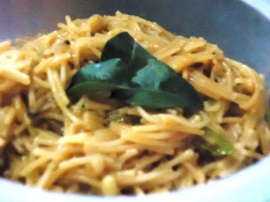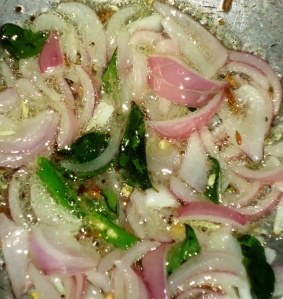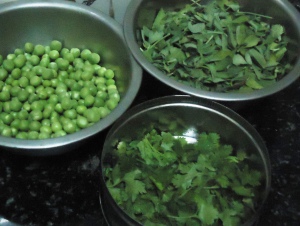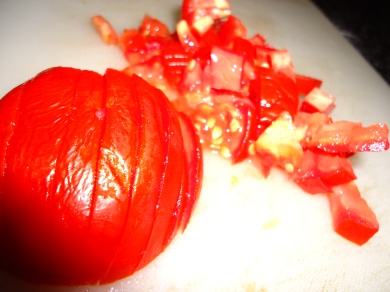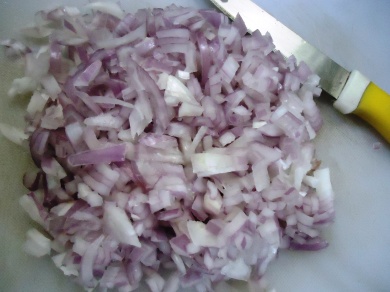Kadhi or karhi is a North Indian dish. It is a spicy dish whose thick gravy is based on chickpea flour (called Besan in Hindi) to which sour yogurt is added to give it little sour taste. It is often eaten with boiled rice or roti. t is considered a light food. Rajasthani andGujarati kadhi differs from the Uttar Pradesh variety. Traditionally, it is sweeter than the other variants, because sugar or jaggery is added to it, but it can be made without sugar for a more sour taste. The Gujarati kadhi is made preferably from buttermilk as it gives a more smooth texture compared to yogurt.
Gujarati Kadhi is a yogurt based sweet and spicy curry that is simple yet irresistible; it gets the sweetness from jaggery, the spice from cinnamon and the heat from green chillies and lends itself to a pure comfort meal. Kadhi goes well with any vegetable and especially when you have legumes as one of the main dishes. The yogurt-based gravy lightens the protein rich legumes, making you feel light after a meal. It is also traditionally served along with Khichdi together known as Khichdi Kadhi.
Cooking time – 30 minutes
Preparation time 15 minutes
Makes: 3-4 servings
Ingredients
- 1 cup buttermilk
- 2 tablespoons gram flour
- 1 tablespoon sugar powdered
- salt to taste
Ingredients for seasoning
- 1/4 teaspoon cumin seeds
- 1/4 teaspoon asafoetida powder
- 1/4 teaspoon mustard seeds
- 1 inch piece of cinnamon
- 3 -4 cloves
- 1 small piece ginger
- 2 slit green chillies
- 1 tablespoon ghee
- 1 tablespoon oil
- 8 – 10 curry leaves, finely chopped
Method
- Combine buttermilk and gram flour, churn through a hand grinder, until the gram flour completely dissolves in the buttermilk
- Heat ghee and oil in a sauce pan on medium heat; add asafoetida powder, the mustard seeds and cumin seeds and allow them to crackle. Stir in the curry leaves, cinnamon, green chillies, cloves and ginger.
- Gradually, add the buttermilk mixture to the above seasoning and allow the mixture to come to a boil whisking it occasionally.
- Keep whisking it it during the process of boiling makes it a perfect and smooth mixture and prevents any curdling. Turn the heat to low and simmer uncovered for 15 – 20 minutes.
- Turn off heat and stir in the with freshly chopped coriander leaves.
- Serve the Gujarati Kadhi hot along with plain rice

Seasoning Ingredients for Gujarati Kadhi – cumin, mustard seeds, ginger piece, curry leaves,cloves, cinnamon, green chillies and Asfoetida@frenslunchbox.com
Quick tip – If sourness is not there in curd one can add lemon juice or amchur/dry mango powder in the kadhi to make it sweet and sour and a great taste


